The following instructors and speakers have agreed to contribute their expertise to the success of October 2023 Skyline Online Course:
 |
Brendan MacLean Brendan worked at Microsoft for 8 years in the 1990s where he was a lead developer and development manager for the Visual C++/Developer Studio Project. Since leaving Microsoft, Brendan has been the Vice President of Engineering for Westside Corporation, Director of Engineering for BEA Systems, Inc., Sr. Software Engineer at the Fred Hutchinson Cancer Research Center, and a founding partner of LabKey Software. In this last position he was one of the key programmers responsible for the Computational Proteomics Analysis System (CPAS), made significant contributions to the development of X!Tandem and the Trans Proteomic Pipeline, and created the LabKey Enterprise Pipeline. Since August, 2008 he has worked as a Sr. Software Engineer within the MacCoss lab and been responsible for all aspects of design, development and support in creating the Skyline Targeted Proteomics Environment and its growing worldwide user community. |
|
 |
Michael J. MacCoss, Ph.D. Mike became interested in biomedical applications of mass spectrometry while working in Dr. Patrick Griffin’s protein mass spectrometry lab at Merck Research Laboratories. He obtained a Ph.D. with Professor Dwight Matthews and pursued a postdoc with Professor John R. Yates III. In 2004 he started the MacCoss lab at the University of Washington and it became obvious that while mass spectrometry data could be collected quickly and robustly, the lack of computational tools for the visualization and analysis of these data was a stumbling block. In 2009 he recruited Brendan MacLean with the goal of developing professional quality software tools for quantitative proteomics. Mike has worked closely with the Skyline development team and our outstanding group of laboratory scientists and collaborators to ensure that our software uses analytical approaches that have been thoroughly vetted by the mass spectrometry community. |
|
 |
Chris Ashwood Ph.D. |
|
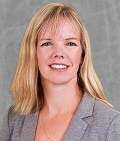 |
Erin Baker Ph.D. |
|
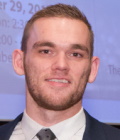 |
Natan Basisty, Ph.D. Nate is a postdoctoral fellow in Dr. Birgit Schilling’s lab in the Buck Institute for Research on Aging in California. He received his Ph.D. from the University of Washington, advised by Drs. Peter Rabinovitch and Michael MacCoss Dr. Basisty develops novel and specialized proteomic approaches to understand aging processes and age-related diseases, including the application of data-independent acquisition (DIA) or SWATH workflows to identify and quantify PTMs and secretomes, development of pipelines to comprehensively assess protein turnover rates, and cell-surface proteomics (surfaceomics). A major aim of his current work is to discover biomarkers of cellular senescence and develop translationally relevant approaches to study senescent cells in humans, enabled by the application of proteomics. Dr. Basisty has been recognized for his work investigating the role of protein turnover in mammalian aging and longevity using a combination of metabolic labeling, LC-MS/MS, and software tools. |
|
 |
Abigail Burrows Franco, Ph.D., obtained her PhD from the University of Nebraska – Lincoln in 2020 and completed her post-doctoral studies at the University of Kentucky under the guidance of Dr. Scott Stanley. During her post-doctoral training, Dr. Burrows Franco was tasked with identifying peptide and protein biomarkers in equine athletes in response to drug administration. This work was in support of the Equine Biological Passport research program. Currently, she is a staff scientist continuing to develop the Equine Biological Passport within Dr. Stanley’s research lab and also serves as the services director of the Research Mass Spec core facility at the University of Kentucky. | |
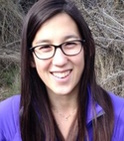 |
Ellen Casavant, Ph.D., is a Senior Scientist in the Biomarker Mass Spectrometry team within the department of Translational Medicine (TM) at Genentech. The biomarker mass spectrometry team aims to develop mass spectrometry data acquisition methods and analytical techniques to support measurement of clinically relevant candidate biomarkers from large clinical cohorts to help inform drug development decision making. As a part of this group, she leads a computational team that is developing a semi-qualified data-independent acquisition mass spectrometry pipeline that can enable efficient processing and QC of DIA-MS datasets. Dr. Casavant has developed a DIA-MS serial dilution method to help understand and establish a quantitative range within a set matrix (Casavant et al, 2023). She is particularly interested in developing a fecal proteomics technique to help to identify non-invasive biomarkers to evaluate mechanism of action for candidate IBD therapeutics and to ease endoscopy burden on patients suffering from this disease.measurements. | |
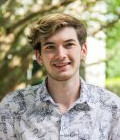 |
Michael Davern Michael is a graduate Ph.D. student in Dr. Jason Surratt’s lab at the University of North Carolina at Chapel Hill. He received his Bachelor's in Chemistry from Wake Forest University. Currently, his research focuses on developing analytical methods for quantitative outdoor atmospheric Per- and Polyfluoroaklyl substance (PFAS) analysis, employing the use of Chemical Ionization Mass Spectrometry. (CIMS) His goal is to achieve lower detection limits and establish real-time methods for atmospheric measurements. |
|
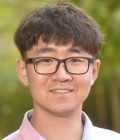 |
Weixian Deng, Ph.D. Weixian is a Senior Scientist at Amgen Inc. working in the discovery proteomics group, he obtained his Ph.D. at UCLA. He obtained his bachelor and master degrees from Jilin University in China, where he studied using targeted mass spectrometry for quantifying plant protein post translational modifications. In his Ph.D. research, he optimized a series of affinity purification-MS techniques and applied DIA method trying to i) quantify the interactome change of Yamanaka factors in induced pluripotent stem cells (iPSC) reprogramming and ii) to characterize long non-coding RNA (lncRNA) Xist's interactome in early embryo development. His goal is to improve the LC-MS based proteomics to gain better understanding in protein-involved gene regulation molecular events which are usually of low abundance in vivo. |
|
 |
Alessio Di Ianni Alessio is a PhD student in Prof. Dr. Andrea Sinz´s lab at the Center of Structural Mass Spectrometry (Martin Luther University Halle-Wittenberg , Germany). His research for the first half of his PhD focused on the characterization of the full-length wild-type human tumor suppressor p53 and the role of its disordered C-terminal domain in DNA binding by means of structural mass spectrometry (MS) techniques (covalent labeling-MS, cross-linking/MS). In the second half of his PhD, he is currently developing novel trifunctional MS-cleavable chemical cross-linkers for proteome-wide cross-linking/MS applications. |
|
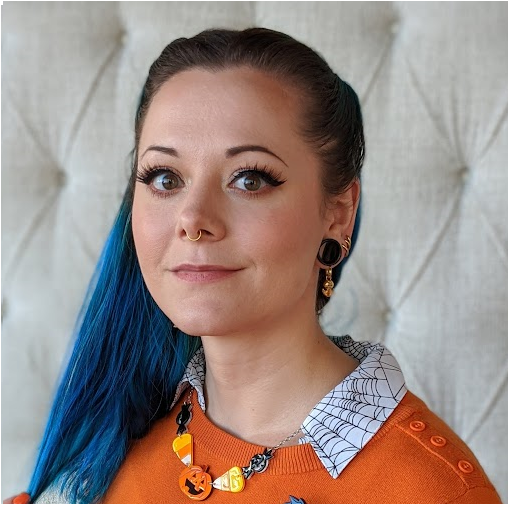 |
Kat Forrest Kat Forrest is a research scientist and graduate student in the Hoofnagle Laboratory at the University of Washington. Prior to joining UW, Kat worked as an analytical chemist at Boston-based synthetic biology company Ginkgo Bioworks, where she helped to develop quantitative methods to support bioengineering projects. In her current role in the Hoofnagle Lab, Kat regularly utilizes Skyline in her efforts to develop mass spectrometry assays for small molecules and proteins. |
|
| Evan Hubbard currently works as a graduate student in the Julian Lab at UC Riverside, using DIA data and gas-phase radical chemistry to find new ways of detecting amino acid isomers. | ||
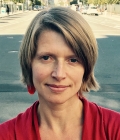 |
Ruth Huttenhain, Ph.D. Ruth Huttenhain is an incoming Assistant professor in the Molecular and Cellular Physiology Department at Stanford, which she will start her lab in Spring 2023. Currently, she holds an appointment as Assistant Adjunct Professor at the University of California San Francisco (UCSF) in the Department of Cellular and Molecular Pharmacology. She obtained a Pharmacy degree from the University of Bonn and a PhD from ETH Zurich, Switzerland, where she developed high-throughput, large scale targeted mass spectrometric approaches. During her postdoc at UCSF, Ruth extended her expertise in quantitative mass spectrometry to study dynamics of protein interaction networks. She pioneered a proximity labeling-mass spectrometry approach that simultaneously captures the precise temporal remodeling and spatial organization of proximal protein networks. The research of Ruth’s group at UCSF focuses on characterizing protein interaction and signaling networks to understand the biology underlying the development of psychiatric disorders and the sensing and transmission of pain. Ruth is the Co-Chair of the Early Career Researcher Initiative of the Human Proteome Organization (HUPO ECR). |
|
 |
Camille Lombard, Ph.D. Cam obtained her PhD from the George Washington University under Prof. Nemes. There, she developed new proteomic approaches to characterize single cells in developing frog embryos. She followed Prof. Nemes to the University of Maryland as a Postdoc (1 year) and then moved on to be a NRC postdoctoral fellow at the National Institute of Standards and Technology (NIST). At NIST, Cam developed DIA approaches to characterize CAR-T cell therapies. Now, she is a Sr. Scientist at AstraZeneca in the Cancer Biomarker Development team in early oncology. Her current work focuses on developing targeted assays (PRM) to characterize the proteome of patient’s tumor tissues in clinical trial cohorts. |
|
 |
Lindsay K. Pino, Ph.D. Lindsay is the co-founder and chief technology officer at Talus Bio. With over a decade’s experience in analytical chemistry and computational biology, she develops technologies for quantitative proteomics. In particular, at Talus, she's working on the challenges associated with scaling-up quantitative proteomics experiments for drug discovery. She has been involved in a large variety of research projects spanning cancer drug discovery, molecular mechanisms of aging, epigenetics, and spatiotemporal proteomics. |
|
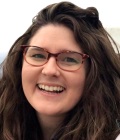 |
Deanna Plubell Deanna is a Ph.D. student in the MacCoss lab at the University of Washington. A portion of her research has been the use of data-independent acquisition to aid in peptide selection for targeted assay development. Her other research interests include the use of mass spectrometry techniques for detecting proteolytic cleavage activity and small endogenous polypeptides in neurodegenerative disease. Prior to joining the MacCoss lab, Deanna worked at Oregon Health & Science University where she used both discovery and targeted proteomics methods to investigate changes to adipose tissue and lipoprotein proteomes in cardiovascular and metabolic diseases. |
|
 |
Nick Riley, Ph.D. Nick is an assistant professor in the Department of Chemistry at the University of Washington, and his new lab opened in September 2023. Prior to his time in Seattle, Nick was a postdoctoral fellow in chemical glycobiology at Stanford University with 2022 Nobel Laureate in Chemistry, Prof. Carolyn Bertozzi. Before Stanford, Nick earned his PhD from the University of Wisconsin- Madison working on methods to advance electron transfer dissociation technologies with Prof. Josh Coon. The Riley Research Group seeks to understand how cell surface glycosylation shapes dynamic processes governing cancer metastasis using systems glycobiology and mass spectrometry. |
|
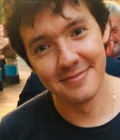 |
Juan Rojas Juan works as a research associate in Prof. Dr. Adrea Sinz’s lab at Martin-Luther-University Halle- Wittenberg (Germany). Throughout the last year he has worked with LC-TIMS-MS/MS data for the analysis of cross-linking mass spectrometry data in Skyline. The focus of the work has been to add an additional threshold of data validation, particularly for intrinsically disordered proteins and protein regions. During his PhD under the tutelage of Prof. Dr. Ralf Hoffmann he used LC-IMS-MS to identify and quantify low abundance carbonylation PTMs in human plasma in search of potential biomarkers towards oxidative distress related diseases such as rheumatoid arthritis. Prior to his stay in Leipzig (Germany), this Panamanian-born nomad obtained a BSc in Biochemistry at Florida State University (USA), worked as a mass spectrometry technician at INDICASAT-AIP (Panama), and obtained a MSc in Molecular Analytical Science at The University of Warwick (UK). |
|
 |
Roman Sakson works as a research associate at the Leibniz Institute for Analytical Sciences, ISAS, in Dortmund (Germany). He joined the Proteomics group headed by Prof. Albert Sickmann end of 2020. Before that, Roman worked for five years as a master as well as Ph.D. student at the Core Facility for MS and Proteomics at Heidelberg University. In 2015 Roman started working with Skyline and later Panorama for targeted assay development, data visualization and quality control. He enjoys teaching a lot and has offered Skyline courses to colleagues and fellow students on numerous occasions. Roman’s main current research interest is robust and accurate targeted proteomics for clinical applications. | |
| Pawel Sadowski Ph.D. completed his Ph.D. in the field of quantitative proteomics at the University of Cambridge. During subsequent post-doctoral appointments at the New York University and at the University of New South Wales in Sydney he applied label-free and label-based approaches to study biomarkers, protein-protein interactions and PTMs. In 2013 Pawel joined Queensland University of Technology in Brisbane to lead Proteomics and Small Molecule Mass Spectrometry Core in the QUT Central Analytical Research Facility. He supervises research that utilizes LCMS and GCMS instrumentation. Pawel’s interest lays in leveraging the power of recent advancements in data acquisition strategies for MS-based proteomics to drive clinical veterinary research into the next generation. More recently, he has started using quantitative mass spectrometry to study metabolites and other small molecules. | ||
 |
Ariana Shannon Ariana is a PhD candidate within the Ohio State Biochemistry Program. In 2019 she joined the lab of Dr. Amanda Hummon, while using DIA to study tumor-stromal interactions within 3D cell-based tumor cocultures models. In 2022, she began to additionally work with Dr. Brian Searle developing methods to build targeted assays for populations of immune cells. | |
 |
Amie M. Solosky Amie grew up in Ballston Spa, New York, a small town just outside of Saratoga. She completed her B.S. in Chemistry in 2019 at The College of Saint Rose in Albany, NY. Her love for analytical chemistry started at the NYS Department of Health where she started developing biomonitoring LC-MS methods and ran emergency response GC-MS methods to protect New Yorkers in the event of a chemical threat.She is currently a graduate student in the Baker Lab at the University of North Carolina at Chapel Hill. | |
 |
Stoyan Stoychev, Ph.D. Stoyan completed at PhD in Protein Biochemistry that focused on utilizing HDX-MS to elucidate the structural dynamics of the intracellular channel protein CLIC1. He further gained experience in the field of biological mass spectrometry working at the CSIR Proteomics core facility (Pretoria, South Africa) for over 15 years. He is currently a joint position in the applications development teams of Evosep Biosystems and ReSyn Biosciences with main focus on developing end-to-end (sample to mass spectrometer) solutions for standardized proteome profiling. |